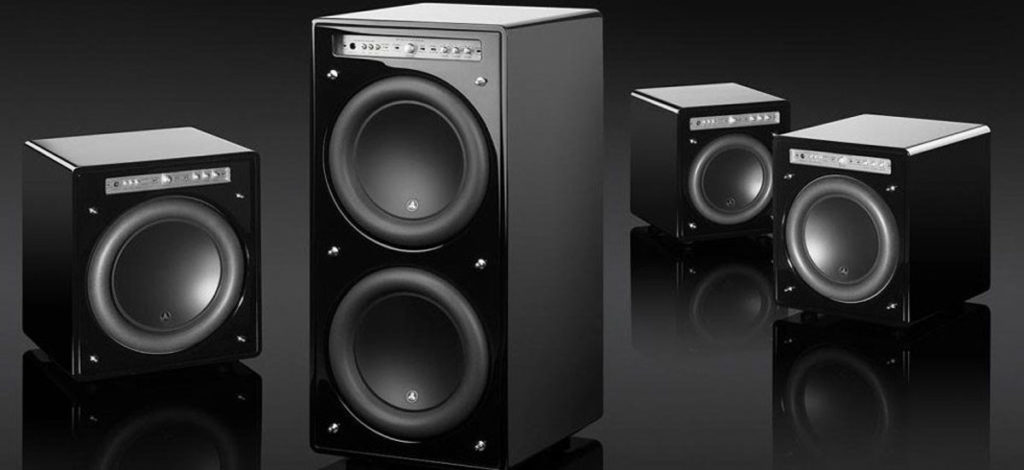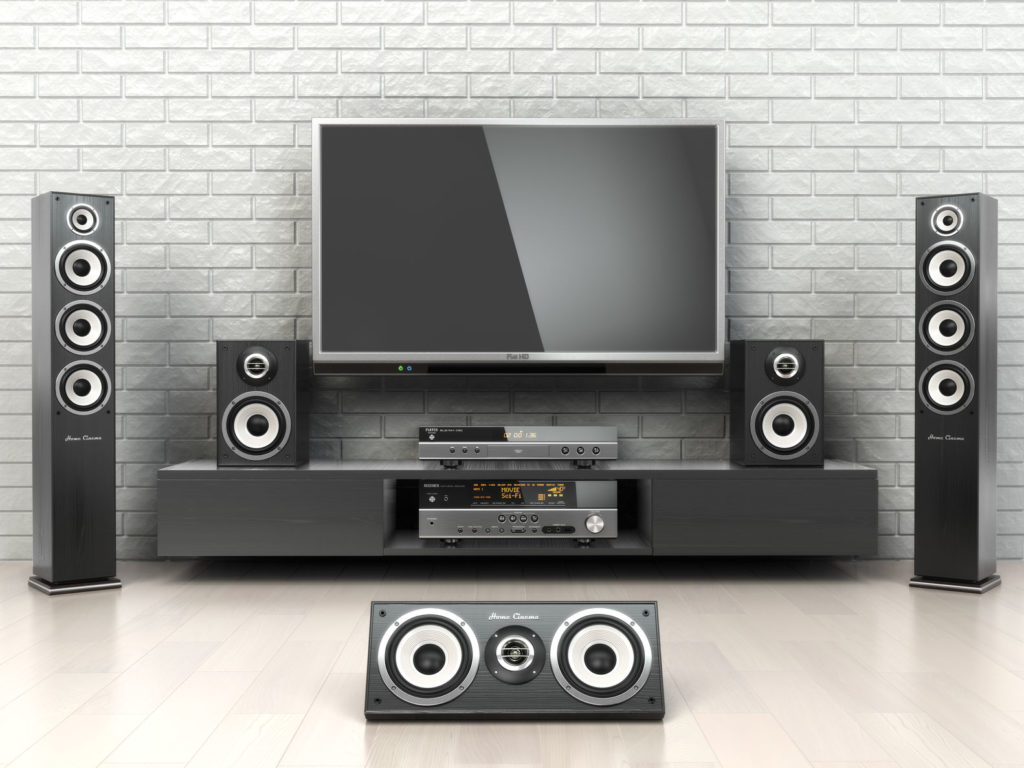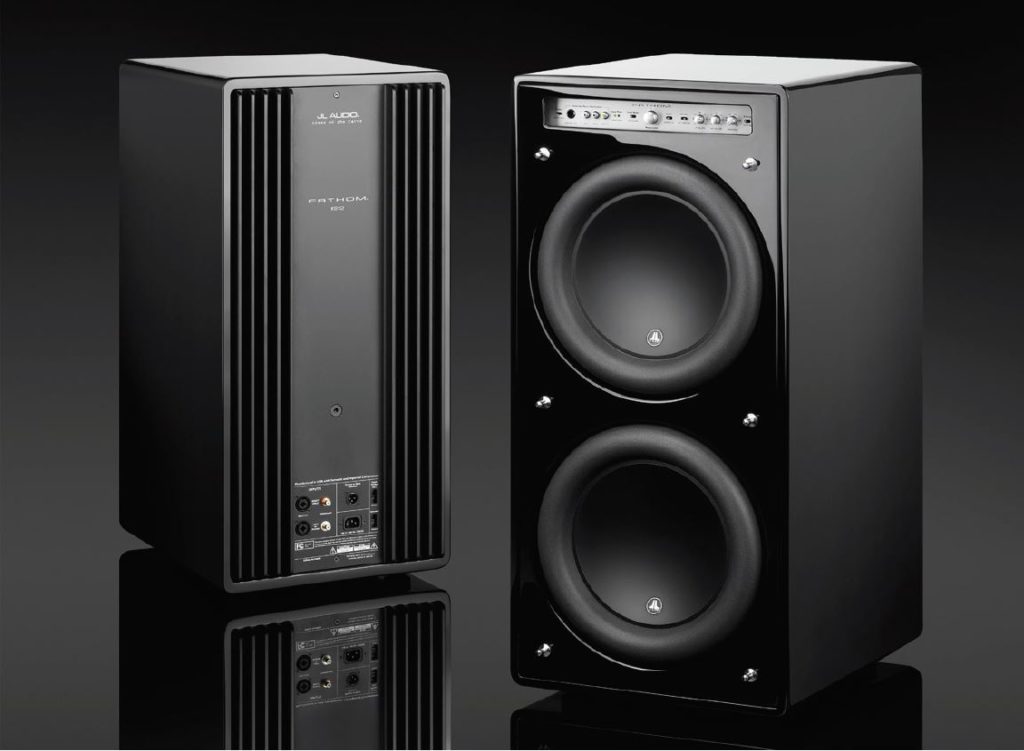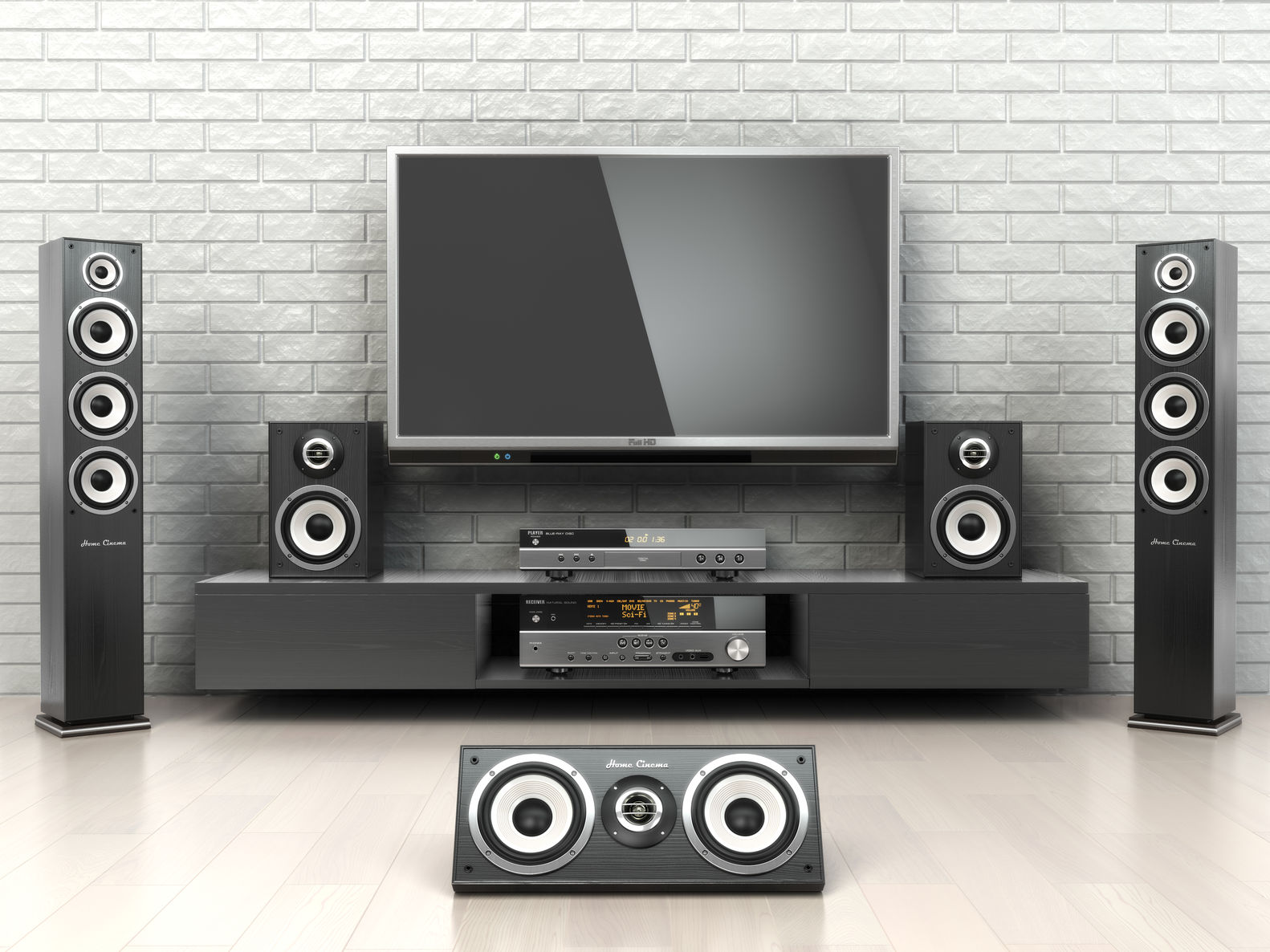There are many opinions about the number of home theater subwoofers to use within your theater rooms. Some say the more the merrier. Others believe that two is the optimum number of subs for any room. Neither of these opinions are based in fact. Let’s step back and look at the facts of physics. Rooms are boxes. They have a certain width, height, and depth that you must work within or that energy must fit within. These three dimensions produce a room volume that is limited in how much energy the room or box can hold. Placing more energy within our boxes is like trying to place a size 15 shoe into a size 8 shoe box. The energy will not fit. In order to make it fit, we will need to bend our size 15 shoe over. This will produce room distortion. We must produce less low-frequency energy in the box and then provide enough surface area low-frequency treatment coverage to minimize the unwanted pressure issues created by too much energy in too small of a room.

In our box or room, we must decide how much energy the room can manage with and without treatment. Matching the room’s ability to manage low-frequency energy with the subwoofers is the first place to begin. Every subwoofer diameter produces so much energy. A 12″ diameter driver produces 2 dB more low-frequency output than a 10″ driver. A 15″ driver produces 2 dB more energy than a 13″ driver. We must match the diameter of the low-frequency driver in any home theater subwoofer with the volume of the room. Certain room volumes can only support so much energy. We must match the output of the home theater subwoofer to every room size. After we have made that decision, we then focus on the number of home theater subwoofers to use in our particular room size and volume.
Home Theater Subwoofers:
https://www.jlaudio.com/collections/home-audio-powered-subwoofers
https://www.crutchfield.com/S-wN1d2JwWmUO/p_946PB16PG/SVS-PB16-Ultra-Piano-Gloss-Black.html
The number of home theater subwoofers to place in a room must also be calculated. Once again, we must look at the volume or size of our shoebox. Larger room sizes can hold more low-frequency pressure. The number and size of the driver and subwoofer must match the room size and volume not what we wish or desire. People say all the time I want two or three subwoofers. I then ask why do you want 2-3 subs? They always, without exception, say they want more. I then say more what. Here is the issue. They mistake quantity for quality. More low-frequency energy within our box is just that. It is more energy placed within the room. It is placed in a room that can not manage it, even from one subwoofer. They believe that more is quality. More is not quality. It is more unwanted room modal pressure issues below 100 hz. More energy in this frequency range is more room distortion. Our goal is to produce less room distortion. The first rule in acoustics is do no harm.

Where do we place our home theater subwoofer in our room. Let’s begin by looking only at the room size and volume. We know that low-frequency energy is divided into frequencies which are labeled hertz ( Hz). Frequencies below 100 Hz. are the frequencies we work with when it comes to home theater subwoofers. At 30 Hz., the wavelength is 38′ long. A 40 Hz. the wave is 28′ long. A 50 Hz. the wave is 22′ long. The height of these long low-frequency waves is equal in proportion to the length of each wave. How is all of this energy going to fit into our rooms with 13, 14, 15’… dimensions in width or length? We have three sound fields that the energy must fit within. It must fit sidewall to sidewall, floor to ceiling, and front wall to rear wall. How is a 38′ wave going to fit into the floor to ceiling soundfield of our 8′ theater ceiling height. It is not. When it won’t fit it feels traps and starts to produce air vibrations that are audible every 3′ within our room. You can not get away from them. We must choose the position within the room that does not excite these existing room modes. This tactic alone with proper room treatment will give us that one, two, punch that all small rooms need.

When considering a home theater subwoofer, look at the room volume first and foremost. Room volume is determined by multiplying length, times width times height. Choose the low-frequency driver diameter to match the room volume. If you do not know how to do this, you can contact us. https://www.acousticfields.com/home-theater-acoustics-service/. Once you have determined the proper driver diameter, you can then look at the number of drivers of home theater subwoofers you will need. If you place two 8″ drivers in your home theater rooms, you have placed the equivalent of one 16″ driver in the subwoofer driver surface area output. We analyze the axial modal issues within the chosen room dimensions and calculate the position and amplitude of all room modes below 100 Hz. We then position the subwoofer or low-frequency producing device in a room position that does not have a modal issue. We must match the driver size and number to your room. It is this marriage that matters when it comes to achieving a quality sounding home theater.
About Us At Acoustic Fields : https://www.acousticfields.com/about/








This article contains misinformation. Are you aware of the subwoofer research done by Harmon and by Earl Geddes? Two to 4 subwoofers does a lot to smooth out bass response in any normal home-sized listening room. Additionally, if I read you correctly, you are saying two 8″ woofers are equivalent to a 16″ woofer?? Not even close, the surface area of an 8″ woofer is approximately 50 square inches, so two of them would be about 100 square inches. The surface area of a 16″ woofer is roughly 200 square inches. A 16″ woofer can move twice as much air as two 8″ woofers, assuming the same Xmax. Maybe you just phrased things awkwardly — in any case, this should be corrected. Matching the size of a woofer to the size of a room makes little sense. In the past I had a so-so 15″ woofer that dropped off rapidly below 40 hz. I now have an 8″ JL Audio woofer (as part of a multi-sub setup) that puts out slightly more output at 40 hz and below than my old 15″. In this case, the smaller woofer actually pressurizes the room more than the large woofer. Whether the room is small or large does have an impact on your SPLs of course, but not in the way you suggest.
This is the issue with subjective analysis with statements such as “two to 4 subwoofers does a lot to smooth out bass response”. What is a lot”? This is a half truth masquerading as a whole truth which is common in this business. You must always weigh the cost benefit ratio when treating a room. What is a lot? Is it worth the cost per dB of improvement? At the price of today’s sub woofers, you are spending tens of thousands of dollars to get that improvement and you totally disregard the middle and high frequencies. I have tried this method but was not impressed with the sound quality versus the cost to achieve. Its much better to spend money on treating all the issues within the room not just the low end. For the money you spend on subwoofers, you could treat the whole room size and volume for all frequencies concerned.
Every subwoofer diameter produces so much energy. A 12″ diameter driver produces 2 dB more low-frequency output than a 10″ driver. A 15″ driver produces 2 dB more energy than a 13″ driver. We must match the diameter of the low-frequency driver in any home theater subwoofer with the volume of the room.
Room volume and sub output must be matched.